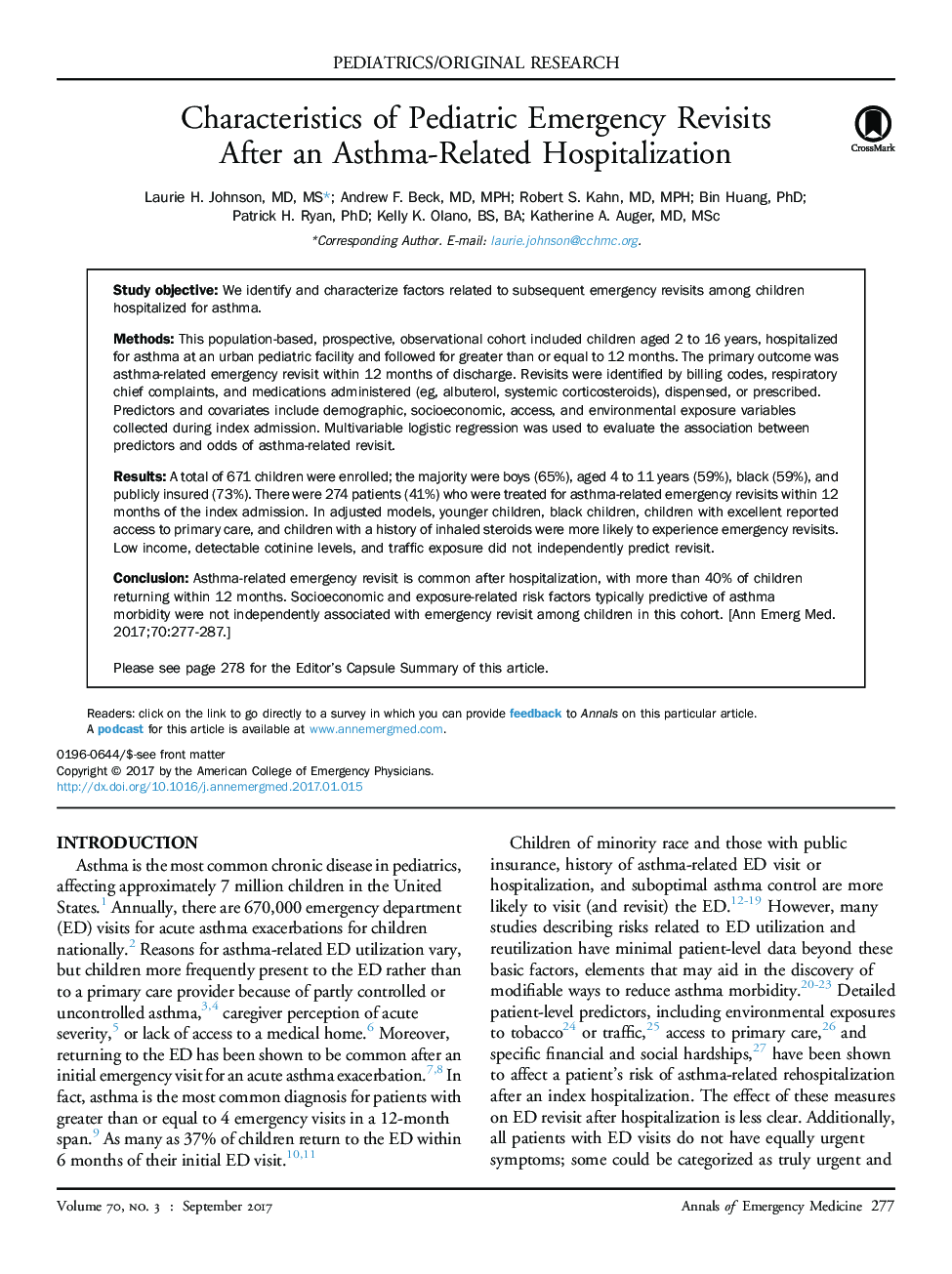| Article ID | Journal | Published Year | Pages | File Type |
|---|---|---|---|---|
| 5651409 | Annals of Emergency Medicine | 2017 | 11 Pages |
Study objectiveWe identify and characterize factors related to subsequent emergency revisits among children hospitalized for asthma.MethodsThis population-based, prospective, observational cohort included children aged 2 to 16 years, hospitalized for asthma at an urban pediatric facility and followed for greater than or equal to 12 months. The primary outcome was asthma-related emergency revisit within 12 months of discharge. Revisits were identified by billing codes, respiratory chief complaints, and medications administered (eg, albuterol, systemic corticosteroids), dispensed, or prescribed. Predictors and covariates include demographic, socioeconomic, access, and environmental exposure variables collected during index admission. Multivariable logistic regression was used to evaluate the association between predictors and odds of asthma-related revisit.ResultsA total of 671 children were enrolled; the majority were boys (65%), aged 4 to 11 years (59%), black (59%), and publicly insured (73%). There were 274 patients (41%) who were treated for asthma-related emergency revisits within 12 months of the index admission. In adjusted models, younger children, black children, children with excellent reported access to primary care, and children with a history of inhaled steroids were more likely to experience emergency revisits. Low income, detectable cotinine levels, and traffic exposure did not independently predict revisit.ConclusionAsthma-related emergency revisit is common after hospitalization, with more than 40% of children returning within 12 months. Socioeconomic and exposure-related risk factors typically predictive of asthma morbidity were not independently associated with emergency revisit among children in this cohort.
